Papers by Dominik Osinski
2019 Joint IEEE 9th International Conference on Development and Learning and Epigenetic Robotics (ICDL-EpiRob), 2019
Sensory substitution devices allow cross-modal interactions with the environment, however control... more Sensory substitution devices allow cross-modal interactions with the environment, however controlled training and quantitative evaluation of cognitive skills development remains challenging. We describe the main advantages of the virtual reality systems in context of developing and assessment of sensory substitution skills. We propose VIRCO - a virtual reality training and evaluation system, which enables remote, automatic experimental setup and data collection. VIRCO utilizes Colorophone sonification method, which provides non-verbal information about color and distance. Our system enables detailed control over a complicated training process of multiple participants, allowing for stimuli to be easily designed.

2018 11th International Conference on Human System Interaction (HSI), 2018
The purpose of this paper is to introduce and initially evaluate an experimental sensory substitu... more The purpose of this paper is to introduce and initially evaluate an experimental sensory substitution device (SSD), which converts color to audible sound. Our system, called Colorophone provides continuous information about the color, light intensity and distance. The color sonification method is inspired by the human visual system. While designing sonification method we took into consideration mismatch in sensory bandwidth, possible sensory overload, nature of sensory spatiotemporal continuity and cross-modal correspondences between colors and sounds. We conducted a preliminary experimental evaluation of the color and object recognition abilities as well as orientation ability. We show that blindfolded participants can easily acquire the color information coded in the auditory stimuli generated by the Colorophone system after a short learning session. Our preliminary experiments indicate that sonified color information helps in object identification and enhances orientation ability. The Colorophone proved to be an easy to understand and intuitive visual-to-auditory coding system, which shows promising results in future visual rehabilitation of the blind.
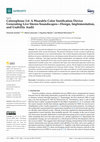
Sensors, 2021
The successful development of a system realizing color sonification would enable auditory represe... more The successful development of a system realizing color sonification would enable auditory representation of the visual environment. The primary beneficiary of such a system would be people that cannot directly access visual information—the visually impaired community. Despite the plethora of sensory substitution devices, developing systems that provide intuitive color sonification remains a challenge. This paper presents design considerations, development, and the usability audit of a sensory substitution device that converts spatial color information into soundscapes. The implemented wearable system uses a dedicated color space and continuously generates natural, spatialized sounds based on the information acquired from a camera. We developed two head-mounted prototype devices and two graphical user interface (GUI) versions. The first GUI is dedicated to researchers, and the second has been designed to be easily accessible for visually impaired persons. Finally, we ran fundamental ...
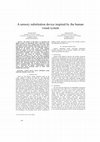
The purpose of this paper is to introduce and initially evaluate an experimental sensory substitu... more The purpose of this paper is to introduce and initially evaluate an experimental sensory substitution device (SSD), which converts color to audible sound. Our system, called Colorophone provides continuous information about the color, light intensity and distance. The color sonification method is inspired by the human visual system. While designing sonification method we took into consideration mismatch in sensory bandwidth, possible sensory overload, nature of sensory spatiotemporal continuity and cross-modal correspondences between colors and sounds. We conducted a preliminary experimental evaluation of the color and object recognition abilities as well as orientation ability. We show that blindfolded participants can easily acquire the color information coded in the auditory stimuli generated by the Colorophone system after a short learning session. Our preliminary experiments indicate that sonified color information helps in object identification and enhances orientation ability. The Colorophone proved to be an easy to understand and intuitive visual-to-auditory coding system, which shows promising results in future visual rehabilitation of the blind.

Sensors (Basel, Switzerland), 2021
Surgical procedures involve major risks, as pathogens can enter the body unhindered. To prevent t... more Surgical procedures involve major risks, as pathogens can enter the body unhindered. To prevent this, most surgical instruments and implants are sterilized. However, ensuring that this process is carried out safely and according to the normative requirements is not a trivial task. This study aims to develop a sensor system that can automatically detect successful steam sterilization on the basis of the measured temperature profiles. This can be achieved only when the relationship between the temperature on the surface of the tool and the temperature at the measurement point inside the tool is known. To find this relationship, the thermodynamic model of the system has been developed. Simulated results of thermal simulations were compared with the acquired temperature profiles to verify the correctness of the model. Simulated temperature profiles are in accordance with the measured temperature profiles, thus the developed model can be used in the process of further development of the ...
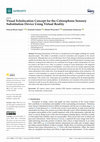
Sensors
Detecting characteristics of 3D scenes is considered one of the biggest challenges for visually i... more Detecting characteristics of 3D scenes is considered one of the biggest challenges for visually impaired people. This ability is nonetheless crucial for orientation and navigation in the natural environment. Although there are several Electronic Travel Aids aiming at enhancing orientation and mobility for the blind, only a few of them combine passing both 2D and 3D information, including colour. Moreover, existing devices either focus on a small part of an image or allow interpretation of a mere few points in the field of view. Here, we propose a concept of visual echolocation with integrated colour sonification as an extension of Colorophone—an assistive device for visually impaired people. The concept aims at mimicking the process of echolocation and thus provides 2D, 3D and additionally colour information of the whole scene. Even though the final implementation will be realised by a 3D camera, it is first simulated, as a proof of concept, by using VIRCO—a Virtual Reality training...
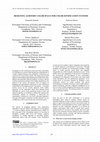
Proceedings of the 25th International Conference on Auditory Display (ICAD 2019), Jun 1, 2019
Designing of color sonification systems provides a possibility of contribution to various fields ... more Designing of color sonification systems provides a possibility of contribution to various fields ranging from rehabilitation of visually impaired through color perception, multisensory art experience to consciousness studies. The design process itself requires understanding and integrating knowledge from many difficult and inherently different branches of science and the resulting sonification method will be highly dependent on the purpose of the system. We present work in progress on designing and experimental verification of color sonification method that will be implemented in Colorophone-a wearable assistive device for the visually impaired, which enables perception of the information about color through sound. Although our system shows promising results in color and object recognition, we would like to enhance the existing color sonification method by designing a framework for experimental verification of our color sonification algorithm. The goal of this paper is therefore to briefly describe our way of thinking in order to provide the basis for the discussion.
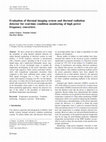
Advances in Manufacturing, 2014
We have carried out at laboratory test to study the feasibility of using thermal radiation detect... more We have carried out at laboratory test to study the feasibility of using thermal radiation detectors for online thermal monitoring of electrical systems in wind turbines. A 25 kW frequency converter is instrumented with a thermal camera, operating in the 8-14 lm wavelength range, and a single-pixel thermopile sensor, operating in the 4-8 lm wavelength range, to monitor the temperature development of the power electronics under various load sequences. Both systems performed satisfactorily with insignificant temperature deviations when compared to data from calibrated point contact sensor. With spatial averaging over a 7 mm 9 7 mm for the camera and temporal averaging over 60 s for the thermopile sensor, we reduce the root mean square noise to 45 mK and 68 mK respectively. The low cost and simple operation of the thermopile sensor make it very attractive for condition monitoring applications, whereas the attractive feature of the camera is the possibility of multi-point or distributed temperature measurements.
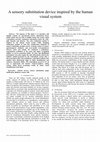
— The purpose of this paper is to introduce and initially evaluate an experimental sensory substi... more — The purpose of this paper is to introduce and initially evaluate an experimental sensory substitution device (SSD), which converts color to audible sound. Our system, called Colorophone provides continuous information about the color, light intensity and distance. The color sonification method is inspired by the human visual system. While designing sonification method we took into consideration mismatch in sensory bandwidth, possible sensory overload, nature of sensory spatiotemporal continuity and cross-modal correspondences between colors and sounds. We conducted a preliminary experimental evaluation of the color and object recognition abilities as well as orientation ability. We show that blindfolded participants can easily acquire the color information coded in the auditory stimuli generated by the Colorophone system after a short learning session. Our preliminary experiments indicate that sonified color information helps in object identification and enhances orientation ability. The Colorophone proved to be an easy to understand and intuitive visual-to-auditory coding system, which shows promising results in future visual rehabilitation of the blind.







Uploads
Papers by Dominik Osinski